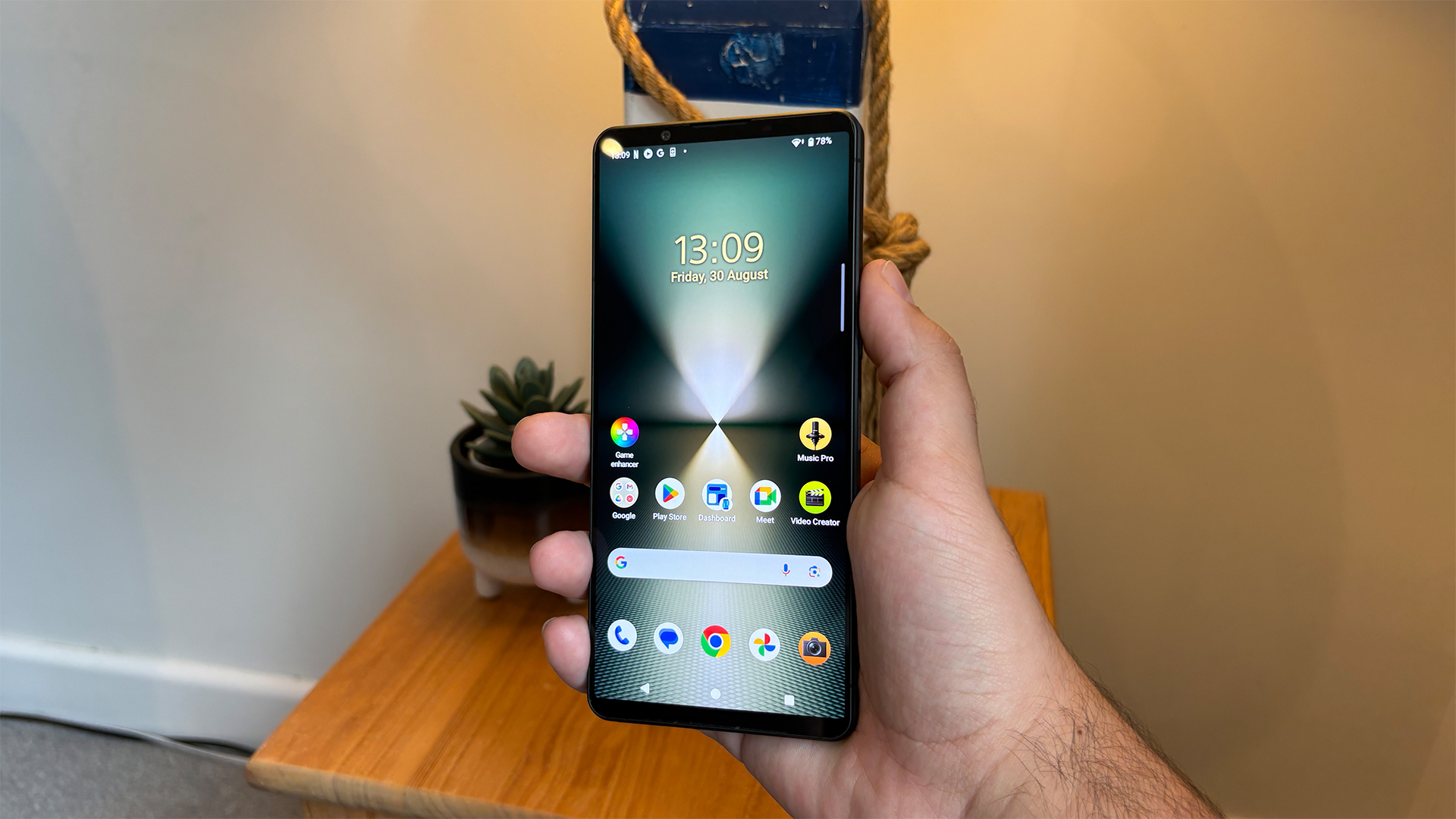
We often get asked why we bother to review smartphones when our wheelhouse is hi-fi, TVs and home cinema. The answer is simple; it is the primary music device for many people, and given the use of an HDR-supporting OLED screen, possibly the highest-quality display that they own.
No other smartphone has devoted itself to AV and musical prowess quite like Sony’s revitalised Xperia series, namely the flagship Xperia 1. We’ve long recommended it as a top choice for those who want the best-looking and sounding smartphone available (and don’t want an Apple iPhone). For years, the Sony’s unique 21:9 aspect ratio screen made it stand apart from the Android crowd. While the Xperia 1 wasn’t necessarily the best for daily use, it was an absolute treat for watching movies.
Alas, Sony has opted to take the latest generation, the Xperia 1 VI, in a new direction to get its handset in more, well, hands. It’s no secret that Sony hasn’t enjoyed the same success as Apple, Samsung and Google, with average consumers opting for the more well-known and (without sounding too critical) consistent brands.
So, can Sony snag itself a slice of the mainstream smartphone pie with its latest Xperia? And more importantly, has it sacrificed much of what we like about the previous generation to do so?
Price
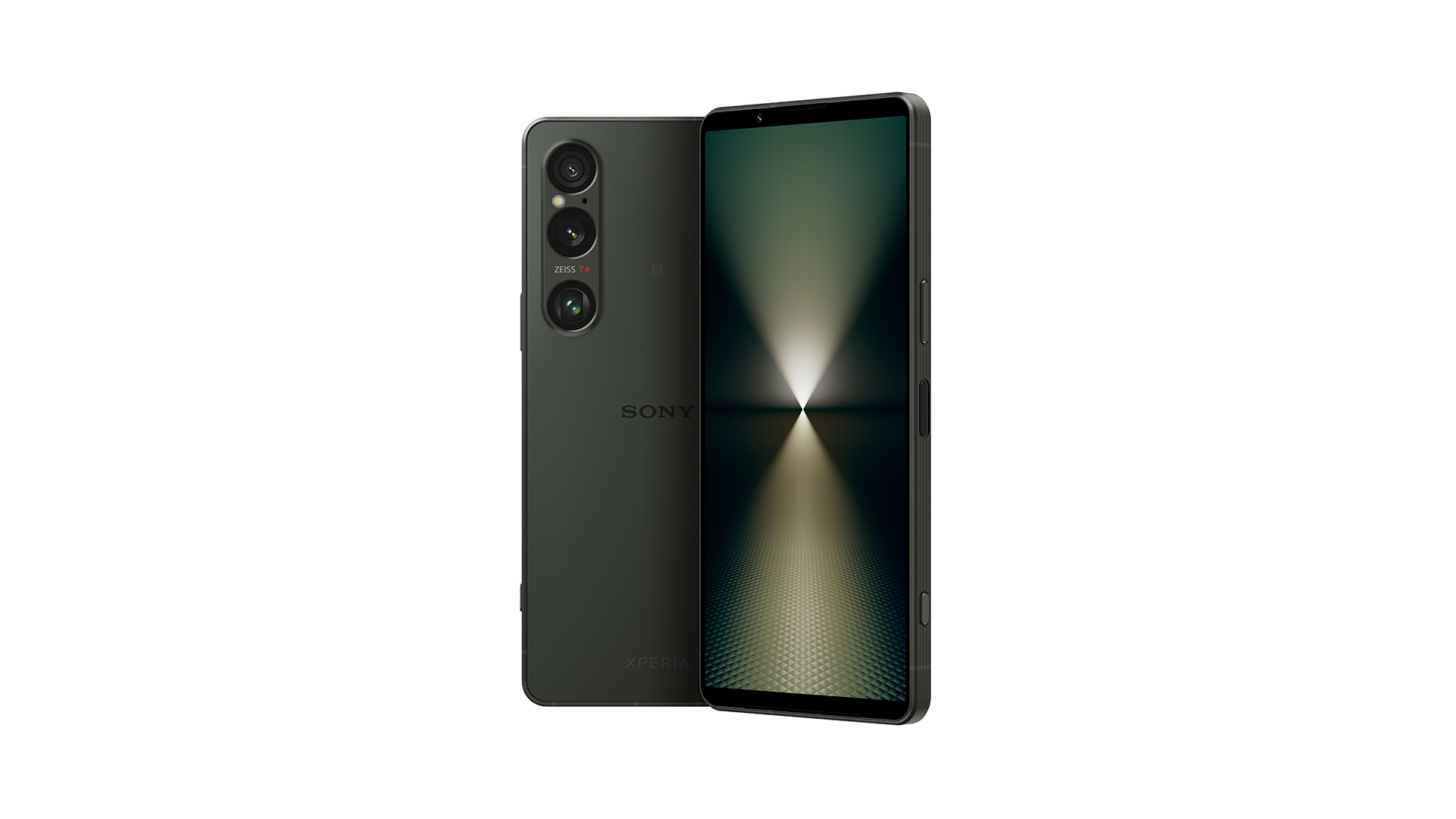
Let’s face it, the 4K display on the older Xperia 1 models was a costly addition, so dropping it from the lineup should subsequently drop the price, right? Wrong. The Xperia 1 VI launches at the exact same £1299 price as its predecessor and, much like its precursor, it won’t be launching in the US or Australia (where it would cost roughly $1700 / AU$2500 respectively if you were interested).
While that might not be the end of the world – after all many manufacturers are still upping their prices year on year – it’s also not good news by any means, as last year’s Xperia 1 V was already considered an expensive phone. It also puts the Xperia 1 VI in the direct firing line of established smartphones from the likes of Samsung and Apple.
Samsung has the four-star Galaxy S24 Ultra which launched at £1249 / $1299 / AU$2199, though that has dropped to around £1149 now that it has been on the market for over six months. Apple’s five-star (and Award-winning) iPhone 15 Pro Max is also a direct competitor, and it can be found for £1199 / $1199 / AU$2199 – though it's expected to be replaced in the next month.
Build
The latest Xperia should be familiar to anyone who’s owned or used any of the previous generation Xperia 1 devices, albeit with a few tweaks. It’s most akin to the Xperia 1 V, sharing its ridged aluminium rails and grippy textured matte glass backing. It even comes in the same black, platinum silver and khaki green finishes and retains the flat, boxy shape and squared-off edges from last year’s Mark V.
While it feels solid in the hand and the additional security of the grippy back and sides is appreciated, we do prefer the smoother and more premium-feeling offerings from Apple and Samsung when it comes to their tactility. The rear panel of the Xperia can even feel slightly sharp, which means it loses some comfort points, but this could also be interpreted as a clean-cut and precise build feature. Sony has added an extra layer of protection in the form of Gorilla Glass Victus 2 on the front of the phone and the first generation Gorilla Glass Victus on the rear. This should make the handset more resistant to drops and scuffs. This Xperia is also IP65/IP68 water and dust-resistant, meaning it can survive a dip in water of up to 1.5 metres for 30 minutes.
The most radical departure from the previous Xperia 1 devices has to be the new aspect ratio, as Sony has ditched the tall and thin 21:9 profile in favour of a more conventional 19.5:9 aspect ratio – the same ratio seen on the Galaxy S24 Ultra. It’s a bittersweet farewell to this unique screen size as, while we’ll miss it for watching movies, we found it to be rather inconvenient for day-to-day functionality. So while the AV enthusiast side of us is disappointed, we have to chalk this up as an improvement, as truthfully it makes the Xperia 1 VI a much nicer handset to use overall.
As for the various buttons and ports on the frame of this device, we have a USB-C charging socket on the bottom, as well as a combination power, lock and fingerprint scanner, textured camera shutter button and volume rocker on the right-hand side, and finally (drum roll please) a 3.5mm headphone jack on the top edge – thank you Sony for keeping this alive for yet another year.
Features
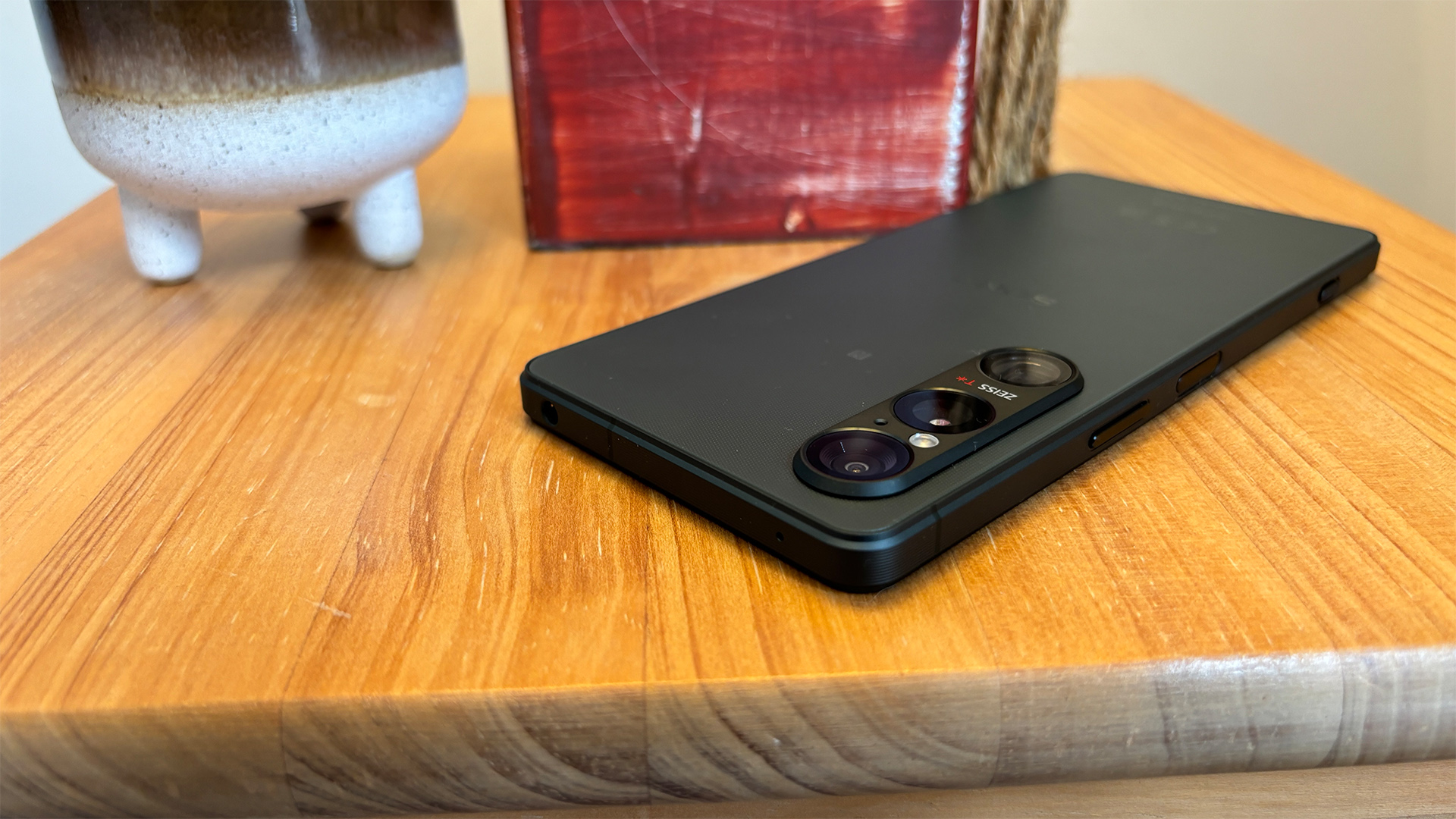
Sony’s latest flagship might not have the AI smarts of the latest Samsung Galaxy, but it’s funnelled its energy into AV features instead; we, of course, approve of this strategy. This Xperia phone is still focused on content consumption and creation, and Sony has enhanced its display and speakers accordingly.
Starting with the display, Sony has equipped the VI with a 6.5-inch LTPO OLED screen, with a variable refresh rate of 1Hz to 120Hz. It supports HDR in the BT.2020 colour space which is a feature commonly found on TVs. Speaking of TVs, Sony seems to have called in some backup from its Bravia TV division, as the default picture mode on this phone carries a “tuned by Bravia” badge. As ever, there is also the Creator Mode picture setting (which is reportedly tuned by its CineAlta professional film camera team), which to us seems to equate to a Filmmaker mode. It dials colours back slightly to a more cinematic standard, with a greater emphasis on authenticity.
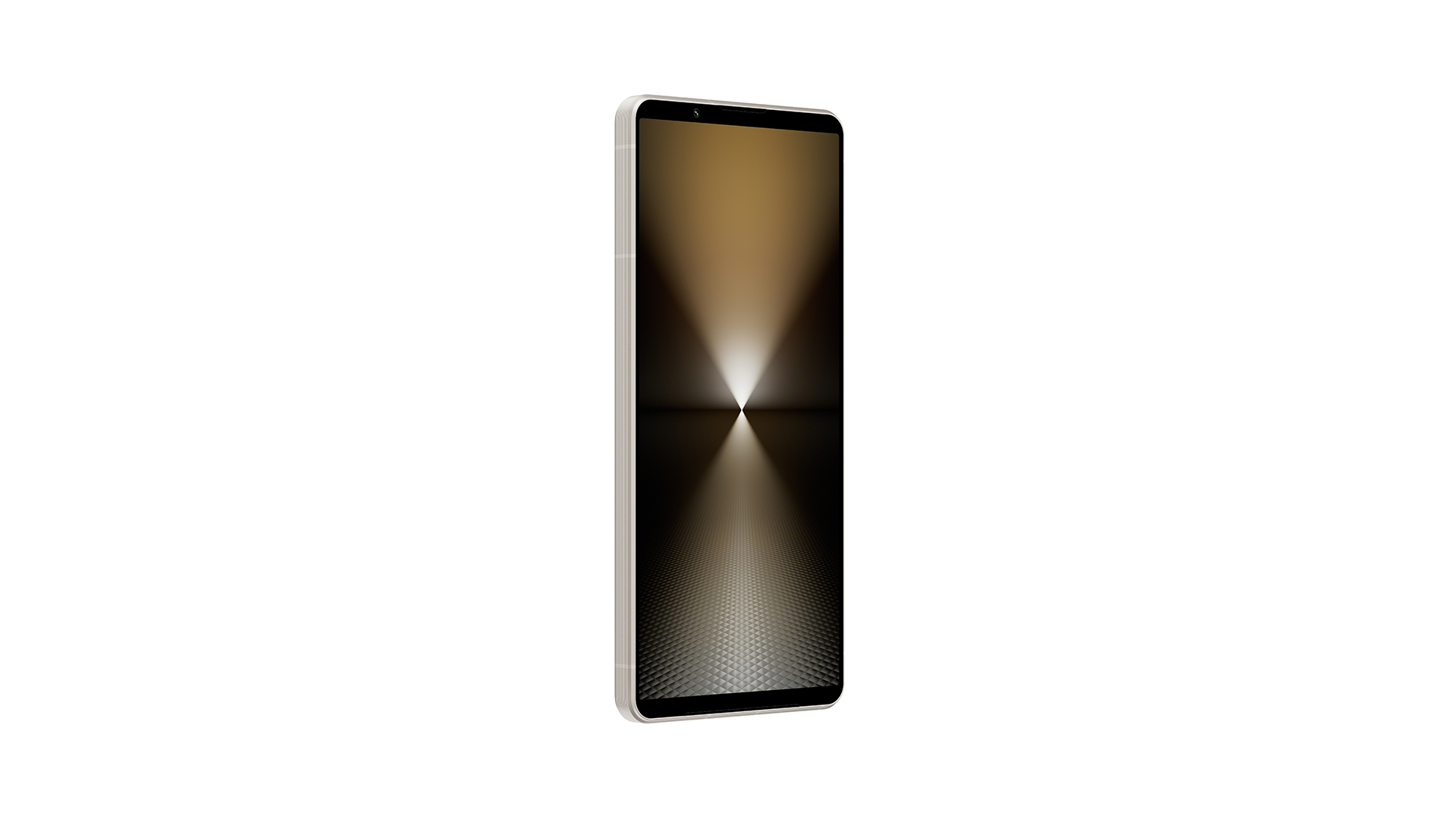
Screen size 6.5-inch
Screen type LTPO OLED
Screen resolution 1080 x 2340 pixels (396 ppi)
Finishes x 3 (Black, Platinum Silver, Khaki)
Operating system Android 14
Storage 256GB / 512GB
RAM 12GB
There is one downgrade that may sound bad on paper, and that’s the new display resolution. Sony has dropped from 4K down to 1080p HD – now if this was a TV review, we would be calling this an absolute catastrophe, but as this is a handheld screen with an immense pixel density of 396ppi (4K TVs tend to have a pixel density of 140ppi), we don’t find this to be the tragedy we first thought it was when the phone was announced.
While we feel as though 1440p (otherwise known Quad HD) might have been a better resolution to choose, especially considering most of its rivals use this resolution on cheaper handsets, we don’t consider it to be a noteworthy deficiency on the Sony. Furthermore, the Android versions of a majority of the streaming apps we use to watch content on mobile devices don’t support 4K playback anyway, with YouTube being the biggest platform for playing UHD content on the go, so the loss of 4K is ultimately less of a sacrifice than we anticipated.
Moving onto the sound chops of this smartphone, we’ve established that the Xperia VI continues the legacy of the headphone jack which for us means instant bonus points. It can be used to play hi-res audio to cans plugged directly into the smartphone. If wireless audio is more your style, then Sony has you covered with Bluetooth 5.4 on board and a boatload of supported audio codecs including aptX HD, aptX Adaptive, aptX Lossless, LE and A2DP, alongside its own LDAC wireless audio codec.
Speaker audio also gets a boost thanks to the full-stage stereo speakers. Unlike other handsets on the market that combine the earpiece and bottom-firing speaker to create a stereo effect, the Xperia 1 VI features dual front-facing speakers that deliver a more balanced sound with enhanced clarity and spatial separation. The positioning is also better than other smartphones, as it's much harder to block the speakers with your hand when holding the phone in landscape orientation.
Moving onto the camera performance, we find the Sony to be a top-tier choice for smartphone photographers who want to dabble in the more complex areas of professional photography. We won’t equate this to a high-end DSLR by any means, but the combination of the dedicated camera shutter button and the “Pro” mode found in the camera app makes for a dedicated camera-like experience that’s intuitive and fun to use. You can even half-press the camera button to establish focus, and the UI changes that mimic the interface of a Sony Alpha camera are both nice touches. There are also a handful of AI features (a staple of 2024 smartphones) to be found in the camera software, including a human pose estimation feature that can track subjects for smoother video tracking.
As for the cameras themselves, Sony has equipped the VI with three on the rear – a 48MP main lens, a 12MP ultrawide and a true optical 85mm to 170mm zoom telephoto lens. The camera module is also coated with Zeiss’ T* anti-reflectivity coating for enhanced picture quality. While we don’t profess to be photography aficionados, we manage to get some great-looking shots out of the Xperia with ease.
The Xperia VI uses the latest Snapdragon 8 Gen 3 processor from Qualcomm, with 12GB of RAM. The most common variant has 256GB of storage, though a 512GB option is available from select retailers. It's also running Android 14 with a small handful of Sony-specific features. This includes a dashboard for quickly accessing some settings and tools, as well as some Sony-specific apps like the Creators’ App, Music Pro and an app that lets you use the handset as an external monitor for a Sony camera. We’re yet to discover any software glitches or stutters, and day-to-day operation feels smooth and responsive.
Picture
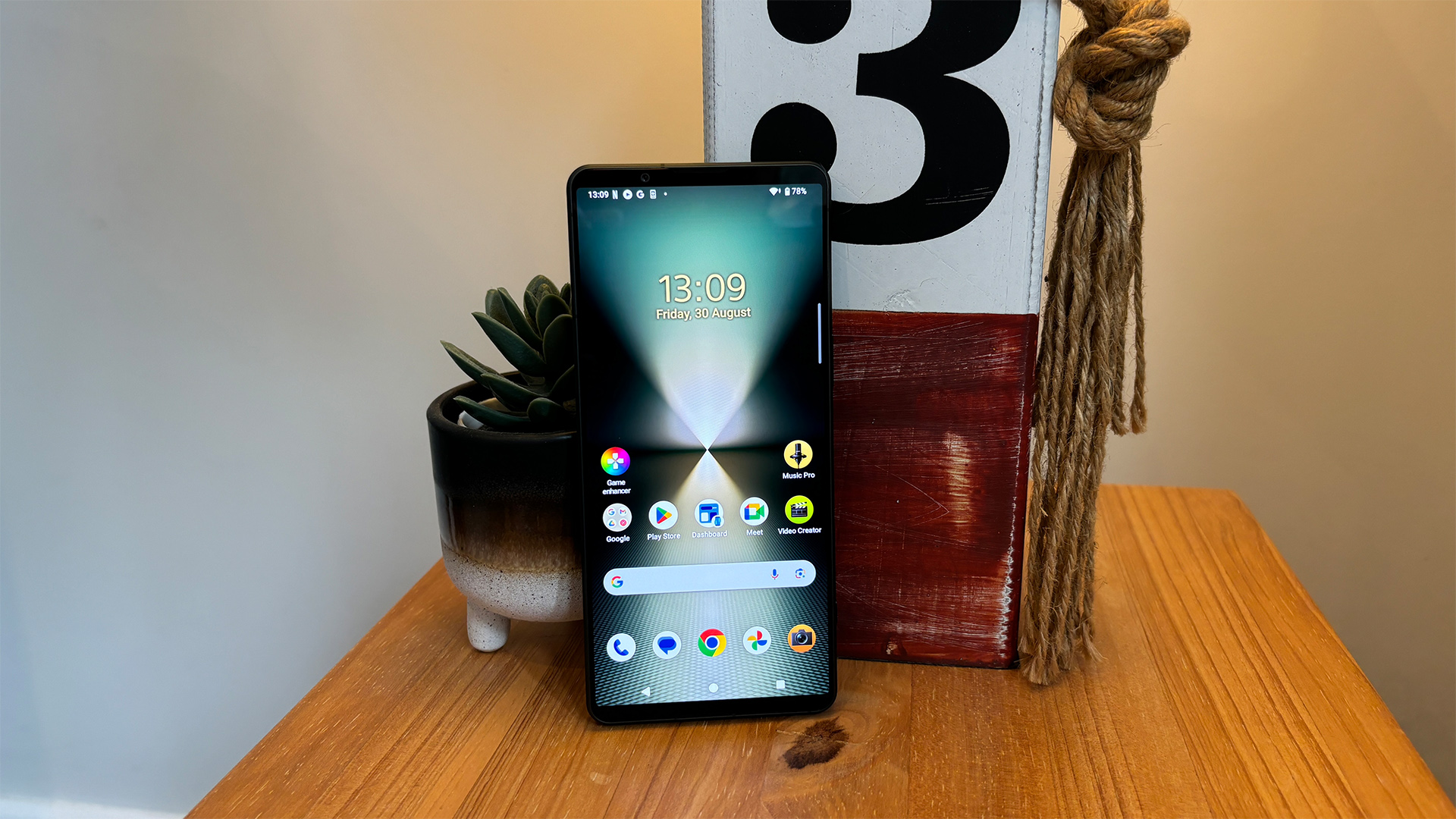
Sony’s smartphones have always impressed where picture performance is concerned, and the Xperia 1 VI continues this trend for yet another year. While black letterboxing bars have been introduced with this generation, we find that the remainder of the picture remains uncompromised. We watch some of our go-to reference films such as The Batman and Blade Runner 2049 on various streaming platforms, using both available picture modes.
Starting in the creator mode, in many ways this feels like having a pocketable Sony TV, as many of the characteristics we’ve seen on the Bravia 9 and Bravia 8 (review coming soon) are apparent here. Sony’s tendency to lean towards a slightly cooler colour temperature is apparent, with some skin tones looking a tad pasty and colours lacking some richness. However, the solidity and detail found within the image more than make up for it.
Switching to the standard picture mode helps to reintroduce some life and richness to the colours, with more lively skin tones and a more engaging presentation overall. While the creator mode setting is certainly the more authentic of the two settings, we find that the Bravia-tuned standard mode is the one we prefer thanks to the enhanced colour saturation.
Edges are sharp and details within clothing and skin textures are well-defined, resulting in a richly detailed image overall. The opening shot of Blade Runner featuring a close-up of an eye is striking thanks to its intricate reproduction of the iris, and spectacularly detailed skin texture. Pair this with the excellent contrast and punchy highlights and we’re treated to an image that oozes three-dimensional depth.
The Sony is also talented in the motion department. Watching sweeping panning shots and scenes in which Officer K’s flying car zooms towards the LAPD headquarters, we find the Xperia to deliver smooth yet natural motion that doesn’t contain any noticeable judder.
Our main criticism here is that, when placed side by side with an iPhone 15 Plus, the Sony can look as though it's trying slightly too hard. It lacks a touch of subtlety and nuance that the iPhone captures effortlessly, which can be best spotted when it comes to how naturally skin tones are presented. The Apple handset is slightly more reserved and cinematic at times, though the Sony’s added oomph can suit some content more – and truthfully some may prefer the more extroverted Sony in this regard.
The iPhone also bests the Xperia in retaining dark details, though the Sony trumps the iPhone where brightness is concerned. In scenes with characters’ faces obscured by shadow, we find that the iPhone manages to keep facial features visible, whereas the Sony tends to let them disappear into the shadows. The Sony does impress where black depths are concerned, though, with inky true blacks courtesy of the OLED display.
Sound
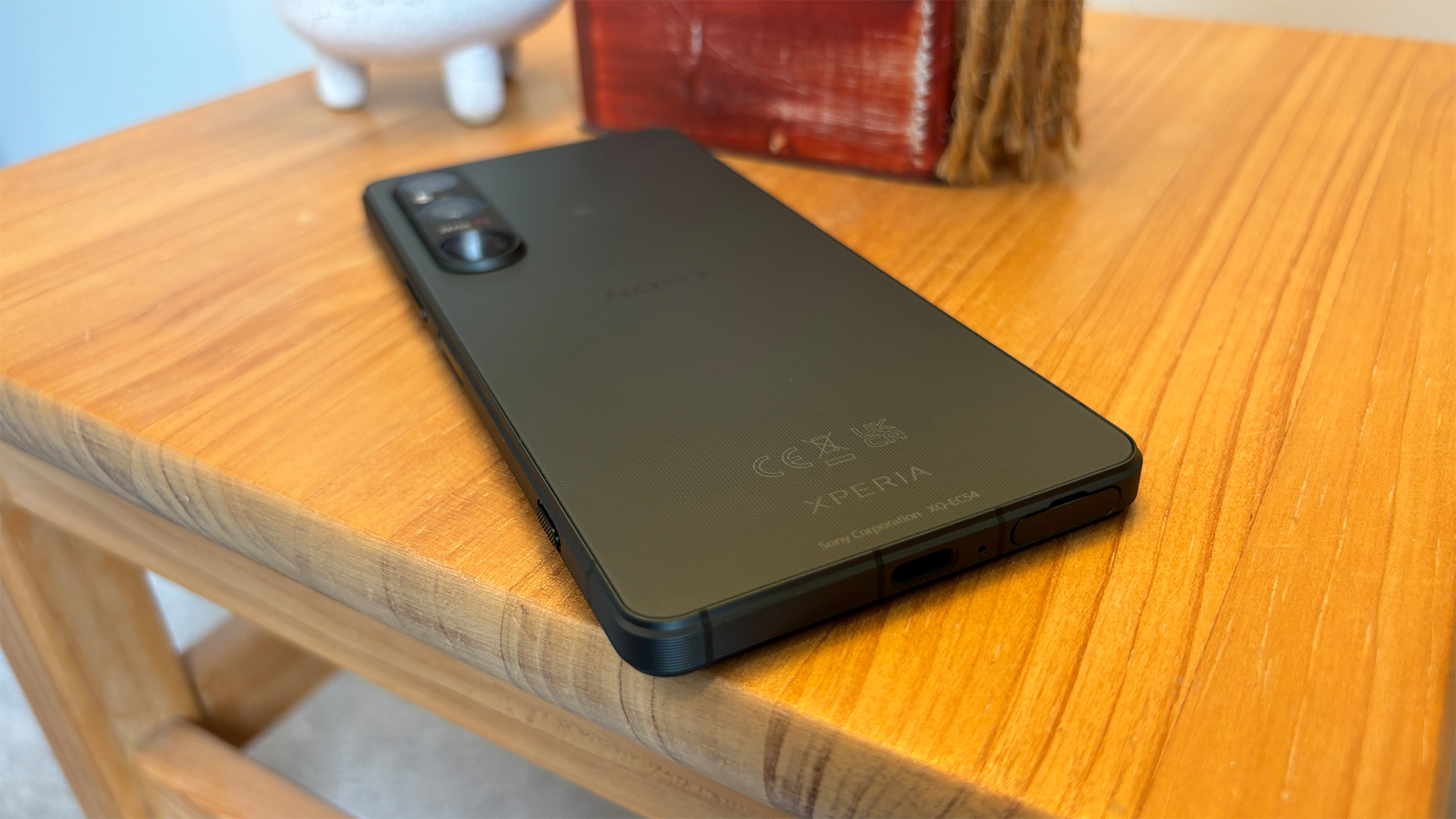
Sony once again delivers class-leading sound when it comes to mobile phone audio with the Xperia 1 VI, as evidenced when we plug a pair of wired headphones into the handset. We use both the built-in 3.5mm headphone jack and an external USB-C to 3.5mm adapter for the sake of fairness when comparing it side-by-side with the iPhone 15 Plus, although it must be said that performance seems similar, pretty much regardless of which way we choose to plug the headphones in.
We play a range of songs from Tidal, including The 1 by Taylor Swift, Dare by Gorillaz, Luna by Bombay Bicycle Club and more, and we conclude that the Xperia delivers a similar experience to its predecessor. It’s a clean, detailed and crisp sound, with superb timing and dynamics, though it can verge on lean-sounding at times. While it may not sound as full-bodied as the iPhone, the Sony injects an enhanced sense of energy, while remaining well organised and composed.
Bombay Bicycle Club's Luna is a prime example of content that best showcases the Xperia’s prowess, with crisp vocals, textured and sparkling instrumentals (the guitars and woodwind are particularly well served), and steadily building dynamics that deliver a punch when the chorus kicks in. It’s all tied together with solid timing and rhythmic pace, resulting in a truly engaging sonic experience overall.
The loudspeakers are mostly impressive by mobile phone standards. They’re detailed and feature good stereo separation that makes a solid attempt to position sounds in relation to what is happening on screen. However, they feel somewhat lightweight, and lack some much needed dynamic punch, meaning we’d prefer to plug some cans in for any extended watching or listening sessions.
Verdict
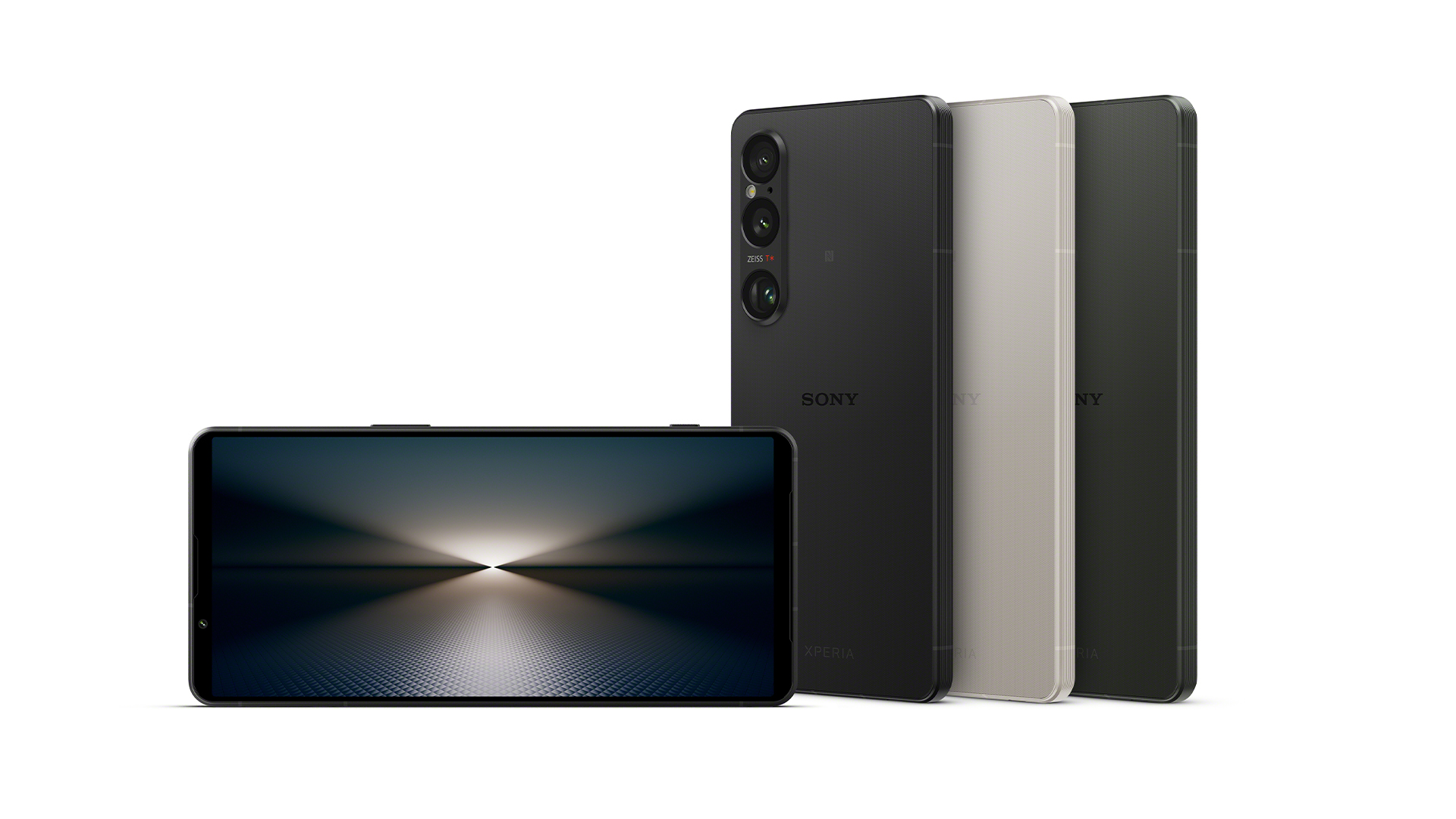
The Xperia 1 VI somehow manages to drop a handful of cherished AV features without sacrificing picture and sound performance. While waving goodbye to the 21:9 screen will be a tough pill to swallow for those who love to take their films on the go, it's a sensible move when it comes to literally everything else this phone does, and the new Bravia-tuned picture mode makes up for this loss in many regards.
It remains an excellent-sounding device that supports wired audio without the need for an adapter (which will always be a win in our books), and even if the speakers lack some impact and weight, we still appreciate the positioning and how spacious they sound. Pair the AV performance with a slick user interface and impressive camera, and the Xperia 1 VI might have the most mass appeal we've seen in a Sony phone for years.
SCORES
- Picture 5
- Sound 4
- Features 5
MORE:
Read our review of the iPhone 15 Pro Max
Also consider the Samsung Galaxy S24 Ultra
Read our Sony Xperia 1 V review







